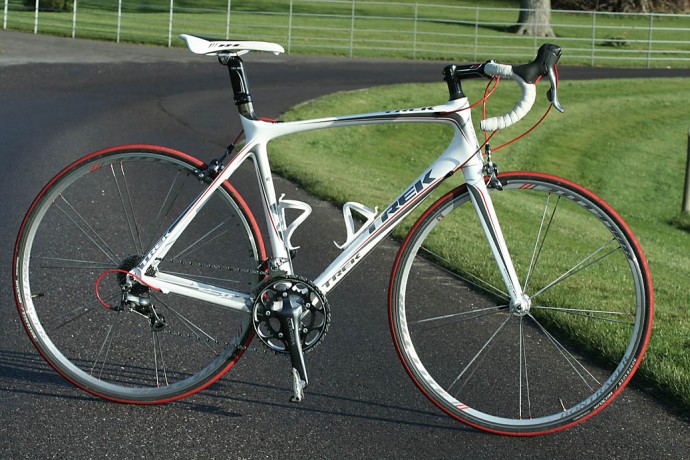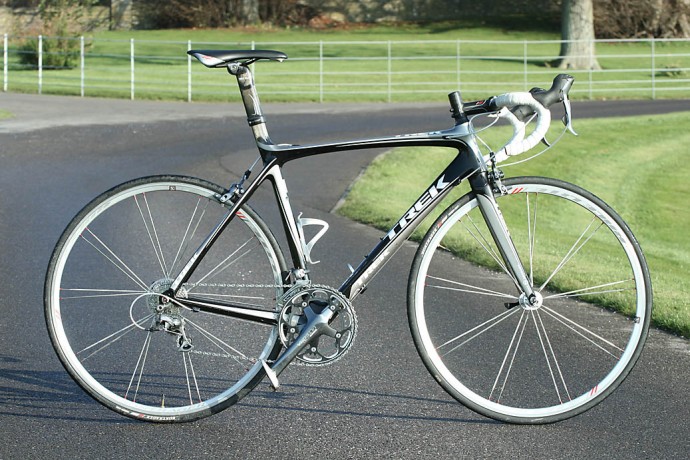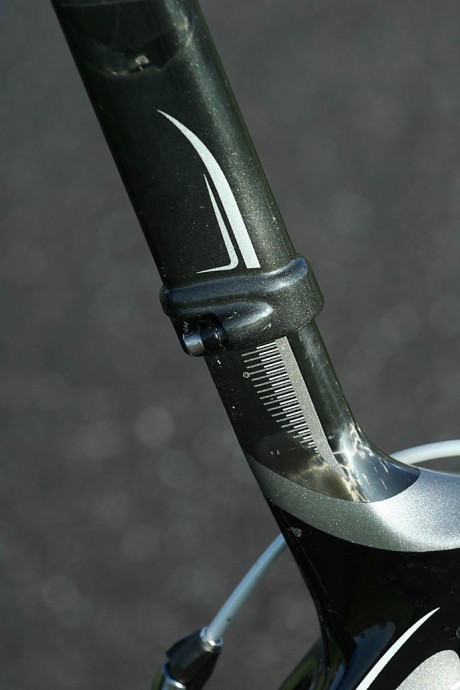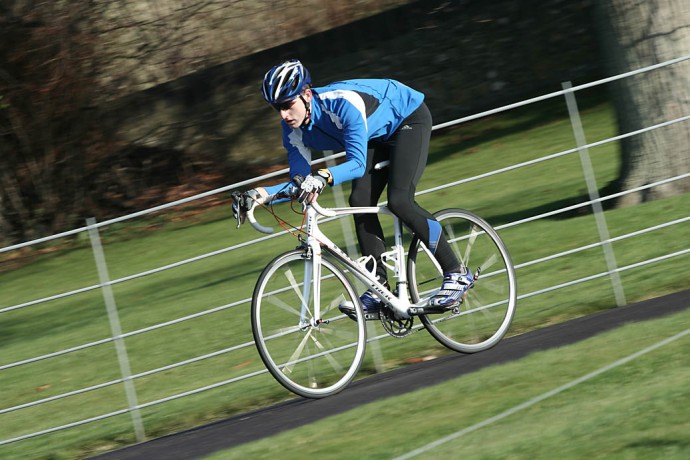- News
- Reviews
- Bikes
- Accessories
- Accessories - misc
- Computer mounts
- Bags
- Bar ends
- Bike bags & cases
- Bottle cages
- Bottles
- Cameras
- Car racks
- Child seats
- Computers
- Glasses
- GPS units
- Helmets
- Lights - front
- Lights - rear
- Lights - sets
- Locks
- Mirrors
- Mudguards
- Racks
- Pumps & CO2 inflators
- Puncture kits
- Reflectives
- Smart watches
- Stands and racks
- Trailers
- Clothing
- Components
- Bar tape & grips
- Bottom brackets
- Brake & gear cables
- Brake & STI levers
- Brake pads & spares
- Brakes
- Cassettes & freewheels
- Chains
- Chainsets & chainrings
- Derailleurs - front
- Derailleurs - rear
- Forks
- Gear levers & shifters
- Groupsets
- Handlebars & extensions
- Headsets
- Hubs
- Inner tubes
- Pedals
- Quick releases & skewers
- Saddles
- Seatposts
- Stems
- Wheels
- Tyres
- Health, fitness and nutrition
- Tools and workshop
- Miscellaneous
- Cross country mountain bikes
- Tubeless valves
- Buyers Guides
- Features
- Forum
- Recommends
- Podcast
review
£2,500.00
VERDICT:
Lightweight, stiff and comfortable with superb ride quality
Weight:
7,600g
Contact:
www.trekbikes.com
At road.cc every product is thoroughly tested for as long as it takes to get a proper insight into how well it works. Our reviewers are experienced cyclists that we trust to be objective. While we strive to ensure that opinions expressed are backed up by facts, reviews are by their nature an informed opinion, not a definitive verdict. We don't intentionally try to break anything (except locks) but we do try to look for weak points in any design. The overall score is not just an average of the other scores: it reflects both a product's function and value – with value determined by how a product compares with items of similar spec, quality, and price.
What the road.cc scores meanGood scores are more common than bad, because fortunately good products are more common than bad.
- Exceptional
- Excellent
- Very Good
- Good
- Quite good
- Average
- Not so good
- Poor
- Bad
- Appalling
As it is the Madone range is vast, kicking off with the £1,625 Shimano 105-equipped Madone 4.5 and going right through to the £5,000 6.9 which you can get with either Shimano Dura-Ace or SRAM Red – whichever Sir or Madam prefers – although it’s not available in a women’s specific design.
We’ve been checking out the mid-range 5.2. And not just one version but – count ’em – two. Because… hell, why not? Double the fun. We’ve been getting busy on the straight 5.2 and the 5.2 Pro, both made from Trek’s OCLV Black intermediate modulus carbon fibre – the middle of their three grades.


So what’s the difference between them? Hold your horses, we’re coming to that. Essentially, the 5.2 Pro has a more race-centric (did we just make that word up?) fit. Our 56cm model has a 140mm head tube compared to 170mm on the standard version for a lower ride position, and a slightly extended reach thanks to a 10mm longer stem. Plus, the 5.2 Pro has a traditional chainset while the straight 5.2 is fitted with a compact for a lower range of gears. However all the angles on both of the bikes are the same performance-oriented build, according to Trek both the bike's should interact with the road in the same way, what's different is the way the bike fits the rider: the Pro is essentially a performance bike with performance geometry and performance fit and the standard Madone is a performance bike with performance geometry, but with a less full-on fit.
So, the standard 5.2 has a more relaxed, sportive-friendly setup – what Trek call their Performance fit, the same as last year’s 5.2 – while the Pro is aimed more at racers.

What’s different?
The 5.2s haven’t altered massively from last year’s models although they do now come with replaceable gear hangers; it’s a whole lot easier to fit a new hanger than to have your frame repaired should it all go horribly wrong. And the hanger is longer than before so it’ll take a larger cassette – up to 28T if you like (a handy bail out gear for the hills if you went for the Pro and its standard 53-39).
Routing to both the front mech and the rear brake has been improved and the colour schemes have been altered, but apart from that Trek have left things pretty much alone this time around.
So what are they like to ride?
The Madones are quick… very quick. Climb aboard and stomp on the pedals and you’re rewarded with a remarkable turn of speed. Maybe it’s just us, but with chunky tubes throughout we’ve always thought that the Madones look pretty heavy. They’re not. Far from it. Our straight 5.2 (56cm model) hit the scales at 7.64kg (16.8lb) while the 5.2 Pro was 7.58kg (16.7lb). And that lack of weight is evident immediately as you accelerate fast up through the gears.

All manufacturers go on about how incredibly stiff their bottom brackets are but with the Madones it really is true… Rather than using a standard system where the bottom bracket bearings screw into but sit outside the frame’s BB shell, Trek house them inside a wider (90mm) shell and place them directly next to the bare carbon. This saves a little weight and also means that you get a colossal junction area where the down tube, seat tube and seat stays meet, so even when you turn on your best crank-bending power, that bottom bracket isn’t going anywhere.
The Q factor – the distance between the cranks – remains standard. And replacing the bearings when they wear out won’t be a problem: common standard-sized bearings to fit Shimano, SRAM, Bontrager, Campag and FSA are available.
With a 30mm shorter head tube and a 1cm longer stem, the 5.2 Pro puts you into a flatter and more aerodynamic ride position than the standard 5.2. You certainly feel that it’s a lower, head-led set-up. And with your body accounting for much more drag when you’re riding than the bike itself, that’s an important consideration if every second counts for you.
In other words, you will go a little faster on the Pro… as long as you’re comfortable in the more aggressive position. If you find it too low and start getting backache, the speed advantage quickly diminishes. It’s not like the Pro has an extreme ride position, though. Most people will get on with it fine. It’s more a question of ride character: do you want racy or slightly more relaxed? You pays your money and you takes your choice on that one.
Whichever model you go for, the 5.2s offer a stable, planted ride and a generous helping of ‘give’ in the frame keeps poor road surfaces from leaving you battered and bruised. Trek reckon this has a lot to do with their seat mast design – a carbon sleeve that clamps to the outside of the extended seat tube. Unlike some other systems, it doesn’t require cutting to length – which saves you some work and is handy if you ever want to sell the bike on. You choose from two different seat mast lengths and three different offsets in order to get the right fit.
The seat mast design requires only 30mm of overlap with the frame and it doesn’t need to be overbuilt and so, as well as saving weight, it can flex more than in a traditional system. It also means that, if you haven’t got one already, you should invest in a torque wrench because you really want to get the clamping bolts tightened just right to prevent any damage.

This all results in smooth ride quality meaning that not only do you continue feeling good at the end of long rides, you can carry on getting the power in when your ride-mates are wilting. And that’s always good news.
Hit the hills and the lack of weight helps the Madones stay ahead of the pack. Bontrager’s Race Lite wheels are reasonably – though not incredibly – stiff and they’re lightweight (1,015g f, 1,417g r, complete with skewers and tyres fitted). The18 flat bladed spokes up front and 20 at the rear held the rims straight throughout testing too – no drama there.
The slightly lower front end of the 5.2 Pro means you can get right over the top to wrestle it about that little bit easier on the killer gradients, but you might prefer the gearing of the straight 5.2 when things get really steep. Although both come with Shimano Ultegra SL cranks, the 5.2’s is a compact with 50/34T chainrings up front and a 12-25T cassette (it’s also available as a 52/39/30 triple); the Pro model comes with a traditional 53/39T setup matched to an 11-25T cassette. So, if you struggle on the climbs or you just want the confidence of low gears for winching up the steep stuff late in the day, the straight 5.2 could be the one for you.
Those Ultegra SL gears, second in Shimano’s groupset hierarchy behind Dura-Ace, worked flawlessly throughout testing. Lightweight and simple to use whether you’re on the hoods or the drops, they’re hard to fault, and the ice grey looks add a little something too.

Both bikes are excellent descenders largely thanks to the Bontrager Race X Lite fork which holds things steady through tight twists and turns. Built with carbon legs and crown, it’s very light weight and the lower section of the aluminium steerer is 1 1/2in in diameter rather than the usual 1 1/8in for added strength and rigidity. Steering is super-accurate so you get the confidence to abandon caution and attack everything full-on. Even hard braking at the last second isn’t a problem – and the Ultegra SL callipers pack a lot of power.
Verdict
Both Madones offer an excellent blend of speed and comfort with genuine performance innovations like the integrated bottom bracket system and the aero seat mast design setting the bikes apart from the crowd. Two-and-a-half grand is a lot to spend on an Ultegra SL-equipped rig but you are getting a pretty special frame and forks package here. Should you go for the straight 5.2 or the Pro version? We’d be on the Pro because we prefer both the more racy geometry and the bigger gearing, but if you are a compact fan, and there are a few of them around here, and want a more standard set-up the straight 5.2 is the sound choice.
Mat has been in cycling media since 1996, on titles including BikeRadar, Total Bike, Total Mountain Bike, What Mountain Bike and Mountain Biking UK, and he has been editor of 220 Triathlon and Cycling Plus. Mat has been road.cc technical editor for over a decade, testing bikes, fettling the latest kit, and trying out the most up-to-the-minute clothing. He has won his category in Ironman UK 70.3 and finished on the podium in both marathons he has run. Mat is a Cambridge graduate who did a post-grad in magazine journalism, and he is a winner of the Cycling Media Award for Specialist Online Writer. Now over 50, he's riding road and gravel bikes most days for fun and fitness rather than training for competitions.
Latest Comments
- mdavidford 29 min 54 sec ago
Or install a turntable.
- hawkinspeter 50 min 59 sec ago
Nope
- Secret_squirrel 2 hours 45 min ago
Um. Call me picky but what's the point in spec'ing an internally routed head tube then not using it? it looks a bit naff.
- David9694 3 hours 34 min ago
Another Conservative bemused at how but a Conservative policy is turning out
- Global Nomad 9 hours 3 min ago
would be good to see you test the Newmen wheels the weight/price ratio is extremely good and suggests that europeans can match the chinese in this...
- mdavidford 11 hours 23 min ago
I don't think you have. I think their point was:...
- jamesha100 21 hours 18 min ago
Should be a lifetime driving ban. Who could seriously argue against the justice of that in this case?
- thax1 1 day 4 hours ago
Another 'sound-alike' mid tier offer, so I get all excited and buy a bunch of them thinking I've got an absolute steal. Only to then realise I've...
- mdavidford 1 day 4 hours ago
first cast out the beam out of thine own eye






















Add new comment
2 comments
This is one of the finest reviews I have seen yet on the Madone, or any bike for that matter. It mentions the technical details but doesn't feature them. Instead this review gives a more practical overview of the bike as it pertains to the rider. It's nice to know about the unique seat mast design and the internal BB system but what does that mean to the rider in terms of feel, fit, finesse, and efficiency? Instead of dazzling us with technical jargon, this review nails down what the rider needs to know to make a decision. Kuddos to the reviewer for a nicely written piece.
This review is spot on - the madone is a comfortable, yet light and responsive bike.
three things though -
a) the 12cm standard seastmast has a limited range, and if you need the 16cm seatmast to gain a correct fit - budget £120 for this.
b) I'm surprised you didn't mention the uncomfortable racelite saddle that comes with it - this was the first thing I changed. Even a £20 charge spoon will be better.
c) my madone had an annoying 'crack' from the BB area when applying force to the pedals - this seems to have disappeared after the LBS regreased the bearings, but others have had similar problems.
nevertheless, relatively small niggles in an otherwise excellent bike.